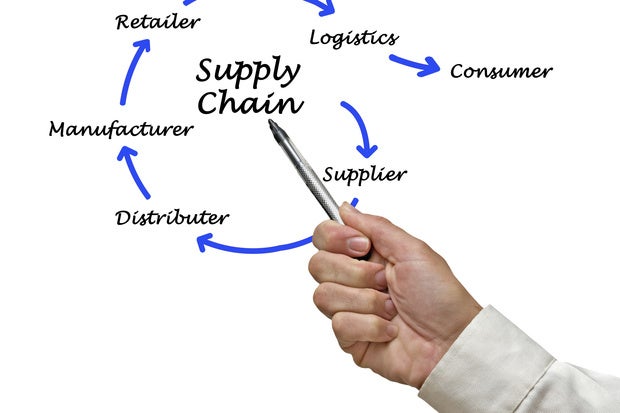Who's Stealing Your Customers?
Your biggest competitor is no longer the obvious one.

IMAGE: Getty Images
It doesn't matter if you're a telco, bank or retailer--Apple, Google and Microsoft could well be your biggest threat. Yes, they may well have been the organizations that helped you grow and expand in the first place. But, while you used them as a new revenue channel, they saw you as an unbelievable source of customer data. Now, they own your customer data, which they are using to reinforce their relationship with your customers.
This is only the start. As artificially intelligent, natural language interfaces like Google Now, Apple's Siri and Microsoft's Cortana get smarter and increasingly become the interface of choice for your customers, the relationship with your customers will migrate into the hands of the big tech giants. Further, these new speech-enabled interfaces present yet another way to learn about what your customers prefer, what they are looking for and what's happening in their life.
So how have they been doing this? Since Google first launched Google Now in 2012, it has worked relentlessly to make its digital assistant smarter and the next step in its evolution - Google calls it Now on Tap - will be to provide users with contextually aware information based on what they're doing within your apps. Apple is also not standing still and is working to build AI and strong contextually aware capabilities into Siri with iOS 9's Proactive that will also enable deep linking into your apps to surface content from 3rd party apps.
If you don't believe the effect of this migration of customer loyalty, look no further than the telco sector. Not so long ago, telcos owned the customer relationship, but as smartphones took off it was the tech providers that had the opportunity to start collecting the business critical interaction data, relegating telcos to do little more than monitoring usage. Now, telcos are left battling each other over airtime contracts rather than benefiting from the opportunities that come from truly owning the customer relationship.
Next on the hit list are the banks and with the launch of products such as Apple Pay, tech providers are again leveraging their strengthening position of trust with customers. If the financial sector doesn't respond soon, as with telcos, the customer relationship will migrate to the tech providers and banks will be consigned to simply providing the backend financial processes.
Retailers are also feeling the squeeze from the likes of Amazon. If Amazon Echo takes off, it has the potential to become a new disruptive technology for retailing, particularly when combined with Amazon's low cost, high volume markets with its own brand of goods, AmazonBasics. And you don't need to look very far to see where the data came from to deliver just what the customer wants.
So where is the next battle line currently being drawn? It's no secret that companies such as Apple, Google and Microsoft, plus key customer facing brands including Amazon and Facebook, are all investing heavily in natural language. Not just because it's a differentiator or that wearable devices are becoming too small to touch easily and therefore need a voice interface; the answer is much simpler--more data.
They've realized that the information people provide when speaking naturally to technology provides them with a wealth of information that they could only dream of before. Think of a focus group and multiply it by a million and you get some idea of the insight into customer behavior that this type of technology can provide.
And, applying a little intelligence to this insight suddenly reveals massive marketing opportunities. For example, asking an app to turn down the heating for two weeks might result in a spin-off sale on travel insurance. Choosing a new route on a fitness app could lead to a subscription offer to join a private gym. Indeed, seemingly unrelated actions suddenly become purchasing opportunities. But only if you have the capability to be a part of the conversation, and only if you invest in the processes that are already available to interact with third party partners.
Of course, the OS goliaths aren't about to suddenly make this kind of knowledge and access available any time soon. Apple, Google, Microsoft, Facebook, Amazon and other goliaths aren't going to make the customer insight that they derive from natural language apps available to all and they're not going to truly open up their natural language APIs to allow enterprises to differentiate themselves by building their own speech-enabled interfaces and apps.
The solution is for enterprises to provide the personalized natural language services that their customers are demanding themselves. Make your app compelling enough that customers want to download and use it, rendering the controller device as the conduit for data straight to your servers. Use natural language technology that you own and control to reconnect with disenfranchised customers and capture customer interactions so that you can learn what your customers are truly thinking.
"From digital employees and mobile personal assistants, to wearables and IoT interfaces, millions of people already are using Artificial Solutions' natural language technology to gain a deep understanding of each and every one of their customers to create an smarter, easier to use and more productive customer experience," said Lawrence Flynn, CEO of Artificial Solutions, the leading specialist in Natural Language Interaction (NLI). "Artificial Solutions just announced the availability of Teneo 4, the first complete platform to enable users to rapidly develop natural language applications that embrace artificial intelligence through the use of machine learning and implicit personalization," Flynn added.
The Internet has opened up competition from all angles. Who could have predicted, for example, that in only six years Airbnb would offer more hotel rooms than the largest hotel group without owning a single room themselves? You could dismiss this as an anomaly; just part of the internet revolution. Except that the next major shift in technology is already happening in the form of artificially intelligent natural language interfaces and apps. And this time, your biggest competitors are far more insidious.
Don't wait for the giants to disrupt your business further. Take back control of your customer conversations and own the data that will build your business in the future.











